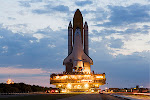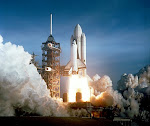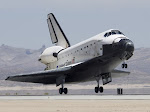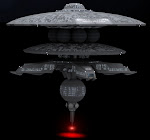Search This Blog
Nasa Building

Reciprocal Links - Contact Me
or Contact below Email address,We will add your link.
Email Me: nasaspaceinfo@gmail.com
Nasa Space Station

NASA's planned heavy-lift cargo rocket

NASA Earthrise

Nasa ares rocket

shuttle launch

Space Shuttle Exploration

Space Station Followers
Nasa International Space Station

Nasa first man on the moon

NASA First Launch Rocket

Space Station

shuttle mission

Blog Archive
-
▼
2009
(173)
-
▼
June
(11)
- Diving Into Sapce - Miles O'Brien
- NASA | NOAA's GOES-O Launch in HD
- Bungee Cords Keep Astronauts Grounded While Running
- Launch Space Shuttle Atlantis STS-125
- A Countdown of Countdowns: The Space Shuttle’s Finale
- NASA ASTRONAUT LEADS TOUR OF SPACE STATION IN HD
- NASA Awards First Recovery Act Contract for Johnso...
- NASA Sets Media Availability for Human Space Fligh...
- NASA reschedules test Max Launch abort system test
- NASA Conducts First Ares I Rocket Cluster Parachut...
- NASA Awards Contract for Aerospace Testing Support
-
▼
June
(11)
Nasa stars

Space Station

space exploration

Tuesday, June 30, 2009
Friday, June 26, 2009
Wednesday, June 24, 2009
Bungee Cords Keep Astronauts Grounded While Running
 at
3:36 AM
Posted by
Anonymous
at
3:36 AM
Posted by
Anonymous
 0
comments
0
comments

International Space Station astronauts are getting a new toy in August – a treadmill. Famously named after comedian Stephen Colbert, the new running machine will help astronauts stay fit, fighting off the bone loss and muscle decay that otherwise comes with space travel.
Just one problem: How do you run where there's no gravity to hold your feet to the ground?
"Bungee cords! You have to strap yourself to the treadmill," explains astronaut Sunita "Suni" Williams. And she's not joking.
In 2007, she ran the Boston Marathon on the station's TVIS treadmill wrapped in bungee cords for the entire 26.2 mile race.
"It's not as bad as it sounds," she laughs.
TVIS stands for "Treadmill with Vibration Isolation System." It's the space station's original treadmill, designed to allow astronauts to run without vibrating delicate microgravity science experiments in adjacent labs. COLBERT, short for "Combined Operational Load Bearing External Resistance Treadmill", has a different kind of vibration-suppression system plus some other improvements for runners:
"I tried a COLBERT mockup at Johnson Space Center," says Williams. "It's broader than TVIS, so you don't have to watch out where your feet go. It allows a wider, more natural gait."
Williams spent a lot of time running during her six months on board the International Space Station, and she recalls what it's like:
"Just getting ready to run is a workout when you're weightless. Before all my training runs up there, I had to hook the toes of one foot under a handrail to keep from floating around while I struggled to put my sock and shoe on my other foot."
"I did this so often, it made calluses on top of my feet. Meanwhile, the calluses on the bottoms of my feet from running on Earth went away. It's totally upside down and backwards!" she laughs.
The treadmill's bungee harness "can be a bit uncomfortable," she continues. "During the marathon my foot sometimes went numb and tingly from the straps' pressure on my hip. Also, I had to use moleskin where the harness rubbed my neck raw."
And inside the close, still quarters of the space station, there are no gentle breezes to cool you down.
"Sweat globs onto you. It doesn't evaporate. I was soaking wet. During the marathon my hair was so sopping it flopped right in my face. We have little fans blowing on us but they don't do much good."
And Williams missed more than the soft winds of Earth.
"On Earth, the crowd cheers you on and you enjoy the camaraderie and support of the other runners. In space it's a little bit lonely. I was by myself most of race. My crewmates did cheer me through the last half hour to the finish. That was great!"
"Also, one of the Soyuz astronauts floated sweet, juicy pieces of oranges to me – so refreshing!"
After the grueling run, Williams longed for a hot shower. "A sponge bath just isn't the same!" she says. Neither did she have a washer and dryer for cleaning her sweat-soaked running clothes. "I hung my drenched clothes near a fan and tied my sneakers to a handrail to air them out."
Williams is the only person to have run the Boston Marathon on Earth and in space—and she noted some interesting differences:
"I recovered faster after the space marathon. When you're floating, your muscles get to rest, so you can totally relax when you finish running – it's like being in a pool."
"Also, the space marathon didn't give me the same endorphin effect – that wonderful mood lift runners enjoy after running – as the Earth marathon did. I'm not sure why," she says. "We are loaded with only about 60% of our Earth weight on TVIS and its harness system, so maybe I just didn't work hard enough!"
Williams says she'd consider running another marathon on COLBERT. "If another astronaut challenges my time, maybe I’ll do it. I have a competitive nature."
When it comes to running, you could say "it's out of this world."
Monday, June 22, 2009
Saturday, June 20, 2009
A Countdown of Countdowns: The Space Shuttle’s Finale
 at
5:14 AM
Posted by
Anonymous
at
5:14 AM
Posted by
Anonymous
 0
comments
0
comments

For 50 years, NASA’s been famous for counting backward from 10 to zero. But a final countdown is now under way that will stand out among them all.
After 126 space shuttle missions, only eight remain before the fleet is scheduled to retire. That’s eight flights remaining to use the unique capabilities of the shuttle to finish construction on the International Space Station and prepare it for life after shuttle. Each flight is unique and extremely complicated. Attention to detail and planning will be needed to be successful. There are no easy flights remaining and there may be pauses in this countdown that will ensure the highest chance of mission success. The shuttle will fly each flight when it’s ready.
Take the time to look and really study the remaining shuttle flights. Here’s a close up look at the countdown of flights:
8: STS-127—A Mission for all Nations
The International Space Station has been growing steadily over the past few years, but the one thing it still doesn’t have is a porch. STS-127 will take care of that.
Space shuttle Endeavour will deliver the external facility for Japan’s Kibo module during that mission, completing the Japanese complex on the space station and providing a science platform outside the station walls.
And if the international flavor of the cargo isn’t enough, it will be the first shuttle mission to visit the station after its expansion to a six-person crew, when the station will have representatives from all five international partners on board.
“It just brings a lot of different nations together,” STS-127 Commander Mark Polansky said. “I look at space and what we’ve done with the International Space Station as a wonderful example of how we can cooperate. We all have a common goal, and we all work together. We all have cultural differences, and somehow we put all that aside and we get the job done.”
The installation of the new external facility will be the perfect opportunity to demonstrate all that.
“You’ll have this truly integrated operation, where you’ve got the Canadian robotic arm holding the new big piece of Japanese hardware, brought up by a United States vehicle,” said Holly Ridings, the lead space station flight director for the mission. “If you think about the integration of all those parts and pieces, it’s really amazing how far we’ve come.”
7: STS-128—Stepping Up Station Science
With the increasing size of the space station crew comes an increasing amount of crew time available to be spent on science. STS-128 will bring up new projects for them to spend that time on.
Tucked inside the multi-purpose logistics module to be carried up inside Discovery’s cargo bay will be two new experiment racks – the materials science research rack-1 and the fluids integrated rack. The materials rack will allow the crews of the space station to conduct experiments on such diverse materials as metals, glasses, crystals and ceramics. They’ll be able to study how materials mix and solidify or how crystals grow, outside the confines of the Earth’s gravity.
If it’s not covered by the materials rack, there’s a fair chance that it will be by the fluids rack. Colloids, gels, bubbles, boiling and cooling are just a few of the long list of areas astronauts will study using the fluids rack.
Of course, with all the additional science being done on the station, the crews will need more room in which to store the fruits of their labor. So Discovery will also bring up a second Minus Eighty Laboratory Freezer for ISS – or MELFI, as it’s known.
And one other way that the STS-128 (and STS-125 and STS-127) mission will further the cause of science is by taking part in crew seat vibration tests that will help engineers on the ground understand how astronauts experience launch. They’ll then use the information to design the crew seats that will be used in future Constellation launches.
6: STS-129—Spares to Space
There will be lots of reasons to miss the space shuttles when they retire, but one of the most practical ones will be the lack of transportation options for large space station equipment. JSC2009-E-125026 -- Charlie Hobaugh (left), Robert Satcher (center) and Randy Bresnik
In addition to all the modules and truss segments that the shuttle has been hauling into space for the past 10 years, there have been occasional ORUs – or orbital replacement units, a fancy word for spare parts – many of which were big. Too big, in fact, to be brought up on any other vehicle that visits the space station or any that’s being planned.
“What you’ve done,” Kirk Shireman, International Space Station program deputy manager, said, “is take away the 18-wheeler and replace it with a bunch of small pickup trucks.”
For STS-129, the 18-wheeler’s cargo hold will be full of spares to keep the station going after the big wheels have stopped rolling. There will be a spare control moment gyroscope, a spare nitrogen tank assembly and a spare ammonia tank assembly. A spare latching end effector for the station’s robotic arm, and a spare trailing umbilical system for the rail car that the arm travels on. A spare antenna and a spare high pressure gas tank.
There will be plenty more spares to come before the last shuttle flight, but STS-129 is definitely a start.
“This should last us for some time,” Shireman said.
5: STS-130—A Room with a View
STS-130 will represent a major milestone mission, as it will be bringing up the last major United States addition to the space station. And as usual, last doesn’t equal least.
Not only will space shuttle Endeavour be bringing up the final node – this one named Tranquility – and giving the expanded crew plenty of space to spread out in, but as this node will come attached to the six-windowed cupola, it’s likely to become everyone’s favorite room on the station.
“This flight will, I think, grab the public’s attention,” Shireman said. “It’s just going to be a really, really neat module for those on board. The dream of being able to go out and just have an unencumbered view of space – we’ll have it. You can open up all the windows and look around and really feel like you’re out there.”
The windows aren’t just for fun, however – they’ll be working windows. As more cargo vehicles begin frequenting the space station, the station’s robotic arm is going to be called into action to capture some of them as they approach and guide them into their docking port. A good view of that operation will be a welcomed help to those at the controls of the arm.
4: STS-131 — Experiment Experience
Much of the science done on the International Space Station involves difficult-to-understand concepts with long, hard-to-pronounce names. But the STS-131 mission will prove that’s not always the case. The experiment racks space shuttle Atlantis will deliver to the space station inside its multi-purpose logistics module focus on things regular people here on Earth do every day: exercise and look out the window.
The experiment racks that STS-131 will deliver to the station – the window observational research facility and the muscle atrophy research and exercise system rack – are pretty much exactly what they sound like. The window observational research facility is designed to beef up the work that astronauts are able to do looking out the window of the Destiny laboratory by adding cameras, multispectral and hyperspectral scanners, camcorders and sensors. With those instruments, the crew will be able to study global climates, land and sea formations and crop weather damage like never before.
Meanwhile, the muscle atrophy research and exercise system rack – or MARES – will give the crew members a way to assess the strength of their muscles while in space. The deterioration of muscles not used while astronauts are floating in microgravity has long been a concern for space programs. This rack will mean that the crew members don’t have to wait until they’re back on solid ground to find out how their time in space affected their health. Instead, the MARES will help them exercise seven different human joints, gauge the strength of the muscles around those joints and decide how the countermeasures designed to prevent muscle atrophy are working.
3: STS-132—Finishing Touches
The last International Space Station modules to be delivered by a space shuttle will come up on the STS-132 mission.
The last space station module to be delivered by a shuttle also happens to be the first Russian module delivered to the ISS by a shuttle. It will be filled, for the launch, with pressurized U.S. cargo, installed by a Canadian robotic arm and include a European robotic arm – all of which underscores once more the very international nature of the International Space Station.
2: STS-133—Spares in Space
STS-133 was originally scheduled to be the final shuttle flight of the fleet, and as such, it was packed to the brim with one last load of spares.
There are debris shields for the Zvezda service module, and antennas for the S-Band communication system. There’s a spare ammonia tank assembly, a spare flex hose rotary coupler, several remote power control modules and even a spare arm for the Special Purpose Dexterous Manipulator.
“It isn’t glamorous, but it’s really important for the space station to execute its mission,” Shireman said.
Besides, even though none of the equipment will actually be installed, it will still take at least three spacewalks to get it all in position to be ready when needed. And this flight (along with the next) will also be used to try out a new relative navigation sensor that could be used on Orion, the next U.S. vehicle that will take astronauts to the International Space Station. So there should still be excitement to spare, as well as equipment.
“There are no boring shuttle flights,” John Shannon, Space Shuttle program manager, said.
1: STS-134—Shuttle Says Goodbye
It’s appropriate that the last flight of the Space Shuttle Program is scheduled to bring up the Alpha Magnetic Spectrometer. Designed to detect cosmic rays, it should continue the tradition of discovery that the space shuttles have fueled for almost three decades. Even so, it’s unlikely that will make it any easier to say goodbye. Shannon said it’s hard to imagine the end of the program at this point, but he expects it to be bittersweet.
“I’m sure it will be emotional,” he said. “But I suspect that it will not be sadness over the passing of that era, but happiness that we were a part of it. The assembly of the space station could not have been done without the space shuttle, and the assembly of the space station is one of the great engineering achievements of mankind.
“So the space shuttle will have done a good job.”
Wednesday, June 17, 2009
Tuesday, June 16, 2009
NASA Awards First Recovery Act Contract for Johnson Repairs
 at
6:05 AM
Posted by
Anonymous
at
6:05 AM
Posted by
Anonymous
 0
comments
0
comments

Using funds from the American Recovery and Reinvestment Act of 2009, NASA has awarded to DRI Commercial Corporation of Irvine, Calif., a contract to repair critical infrastructure facilities at the agency's Johnson Space Center in Houston that were damaged during Hurricane Ike in September 2008. The funds will be used to perform roof repairs and roof ledge replacements at Johnson.
The competitively awarded, firm-fixed-price contract begins June 15, 2009. The total value of the base contract and options is $7.9 million. The base contract lasts approximately 9 months and has seven options. Each of the options, which may be conducted concurrently, also has a performance period of approximately 9 months after notice to begin work.
This is NASA's first procurement using funds from the Recovery Act. Among the key purposes of the Recovery Act are preserving and creating jobs, spurring technological advances in science and health, and promoting economic recovery.
NASA will receive a total of approximately $1 billion in Recovery Act stimulus funding, of which $50 million is prioritized for restoring NASA-owned facilities damaged from hurricanes and other natural disasters that occurred during calendar year 2008.
Use of Recovery Act funds for institutional investments will ensure NASA's key infrastructure capabilities are available to conduct the agency's mission. New jobs will be created to conduct this work funded by the Recovery Act.
The facilities being repaired at Johnson are crucial to NASA's human spaceflight missions. These missions include flying the space shuttle until its retirement, completing the assembly of the International Space Station for its use as a national laboratory, implementing Constellation Program's next-generation space systems and supporting the development of future crew and cargo transportation systems.
Saturday, June 13, 2009
NASA Sets Media Availability for Human Space Flight Committee
 at
5:55 AM
Posted by
Anonymous
at
5:55 AM
Posted by
Anonymous
 0
comments
0
comments

The chair of the Review of U.S. Human Space Flight Plans Committee, Norman Augustine, will be available for a news media conference on Wednesday, June 17, from approximately 5 to 5:30 p.m. EDT.
The media availability will be in the Carnegie Institute, 1530 P Street NW, Washington, 20005. No prior registration is necessary.
Since retiring from his role as chairman and CEO of Lockheed Martin more than a decade ago, Augustine has been one of the nation's leading voices for renewed focus on strengthening American science and technology education. He has chaired several distinguished blue ribbon panels, including the one resulting in the important "Rising Above the Gathering Storm" report of the National Academies and the earlier "Augustine Commission" report on the future of the U.S. space program.
Friday, June 12, 2009
NASA reschedules test Max Launch abort system test
 at
4:55 AM
Posted by
Anonymous
at
4:55 AM
Posted by
Anonymous
 0
comments
0
comments

Weather concerns have prompted the U.S. space agency to reschedule the test launch of its Max Launch Abort System to no earlier than June 20.
The MLAS launch at the National Aeronautics and Space Administration's flight facility on Wallops Island, Va., had been scheduled for June 15. The new June 20 launch window will extend from approximately 5:45 a.m. to 8:15 a.m. EDT.
NASA officials said the unpiloted test of the 33-foot-high vehicle is part of an effort to design a system for safely propelling future spacecraft and crews away from hazards on the launch pad or during the climb to orbit. The system is an alternative concept to the launch abort system chosen for NASA's Orion crew capsule.
"The MLAS vehicle will be launched to an altitude of approximately one mile to simulate an emergency on the launch pad," NASA said. "A full-scale mockup of the crew module will separate from the launch vehicle and parachute into the Atlantic Ocean."
Thursday, June 11, 2009
NASA Conducts First Ares I Rocket Cluster Parachute Test
 at
4:43 AM
Posted by
Anonymous
at
4:43 AM
Posted by
Anonymous
 0
comments
0
comments

Unfurling in majestic patriotic colors, a successful cluster test of the Ares I rocket's three, 1-ton main parachutes was conducted May 20 by NASA and industry engineers at the U.S. Army Yuma Proving Ground located near Yuma, Ariz.
The main parachute is designed to slow the rapid descent of the spent first-stage motor and permit its recovery for use on future flights. The Ares I, the first launch vehicle being designed for NASA's Constellation Program, will launch explorers to the International Space Station, the moon and beyond in coming decades.
Wednesday, June 10, 2009
NASA Awards Contract for Aerospace Testing Support
 at
2:00 AM
Posted by
Anonymous
at
2:00 AM
Posted by
Anonymous
 0
comments
0
comments

NASA has selected Jacobs Technology Inc. of Tullahoma, Tenn., to receive a follow-on contract for Aerospace Testing and Facilities Operations and Maintenance, or ATOM, at NASA's Ames Research Center at Moffett Field, Calif. The contract has a maximum value of $200 million.
This is a cost-plus-incentive-fee contract that begins July 1, 2009. The base contract lasts two years and has three one-year options.
Jacobs Technology will provide support for aerospace testing, and facilities maintenance and operations at Ames. Specific services will include: aerospace testing, facility operation, project development, operation of support facilities and maintenance of aerospace facilities at Ames.
The facilities operated under this contract support a wide variety of testing requirements for NASA and other government agencies, including the Department of Defense, Department of Energy and Department of Homeland Security. They also provide testing services for industry and other non-government entities.
The contract to Jacobs includes subcontracts with Sierra Lobo Inc. of Milan, Ohio, and Qualis Corporation of Huntsville, Ala.

